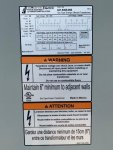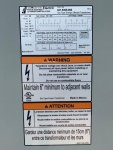LibertyEngineering
Senior Member
- Location
- Allentown, PA
Good Day Folks!
Looking at a design installation for a local Township which the drawings were prepared by another engineer who is being unresponsive to the electrical inspectors questions.
Installed currently (but not energized yet) is a 240V 1-phase Delta Primary to 480V 1-phase Delta secondary 225KVA transformer with #600MCM secondary conductors feeding an 800A MCB distribution panel. Would someone please explain by way of writing out the calculations NEC 240.21(C) (1). I am trying to determine if the primary only protection is acceptable or not since it is a Delta-Delta transformer. My secondary conductors are over 25' in length. Not quite understanding the whole primary to secondary ratio portion.
Thank you for your input
Looking at a design installation for a local Township which the drawings were prepared by another engineer who is being unresponsive to the electrical inspectors questions.
Installed currently (but not energized yet) is a 240V 1-phase Delta Primary to 480V 1-phase Delta secondary 225KVA transformer with #600MCM secondary conductors feeding an 800A MCB distribution panel. Would someone please explain by way of writing out the calculations NEC 240.21(C) (1). I am trying to determine if the primary only protection is acceptable or not since it is a Delta-Delta transformer. My secondary conductors are over 25' in length. Not quite understanding the whole primary to secondary ratio portion.
Thank you for your input





